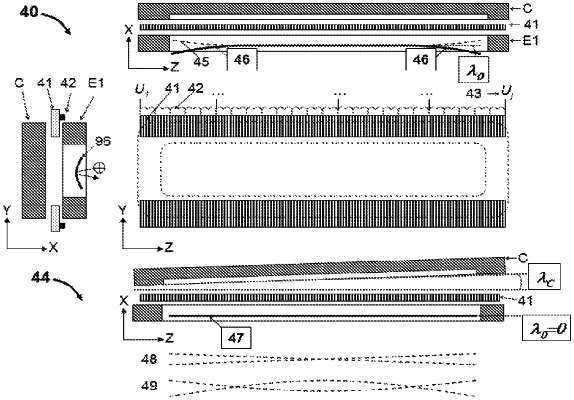| CPC H01J 49/406 (2013.01) [H01J 49/405 (2013.01)] | 16 Claims |

|
1. An ion mirror comprising:
a plurality of electrodes that are configured to generate an electric field region that reflects ions in a first dimension (X-dimension), and wherein at least part of the electric field region through which ions travel in use has equipotential field lines that diverge, converge or curve as a function of position along a second, orthogonal dimension (Z-direction),
wherein one or more electrodes of the plurality of electrodes define an opening through which the ions pass, wherein the opening has a width in a third dimension (Y-dimension) orthogonal to the first and second dimensions that varies as a function of position along the second dimension (Z-direction) for generating said equipotential field lines that diverge, converge or curve,
wherein said least part of the electric field region having equipotential field lines that diverge, converge or curve is configured to tilt the time front of ions being reflected in the ion mirror; wherein said at least part of the electric field region is configured to tilt the time front of ions being reflected in the ion mirror by a first angle, in the X-Z plane, that is greater than a second angle by which the electric field region steers the average ion trajectory, in the X-Z plane.
|